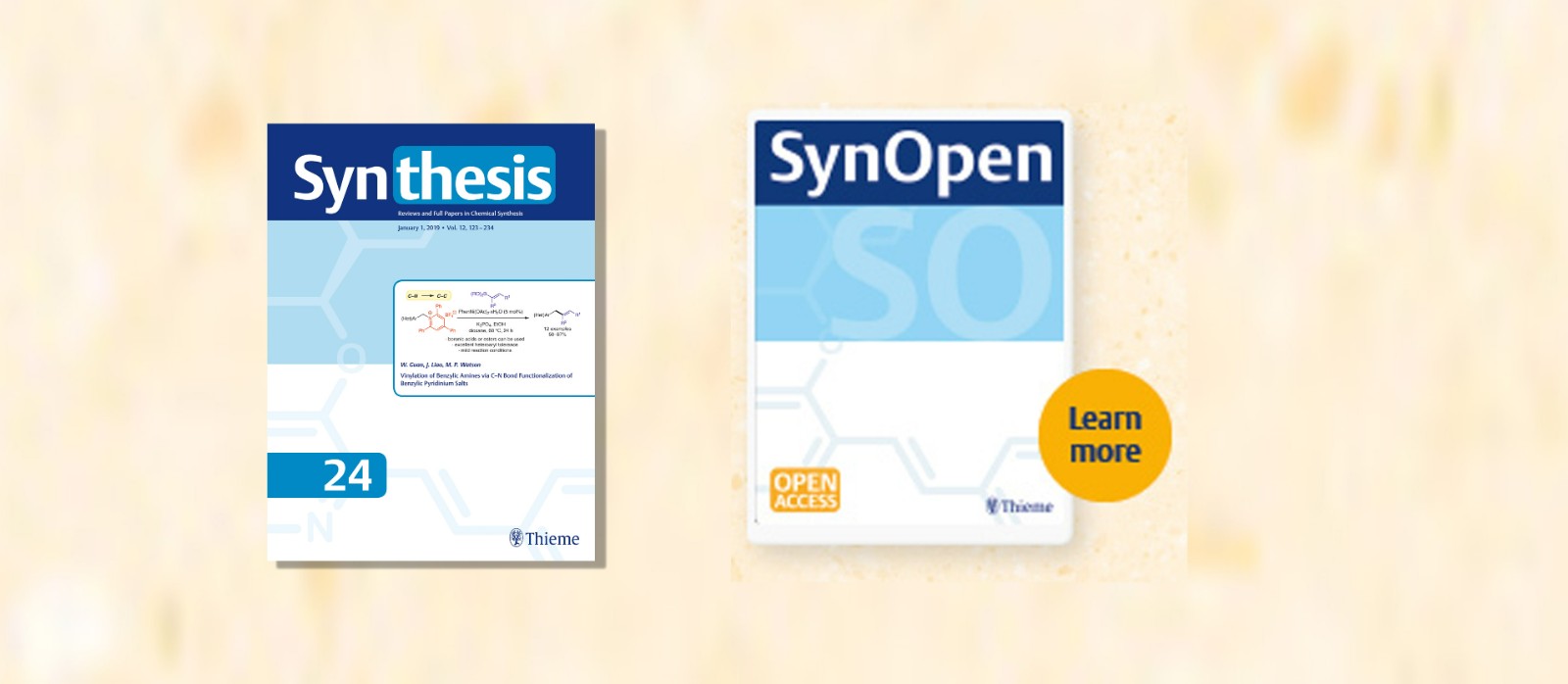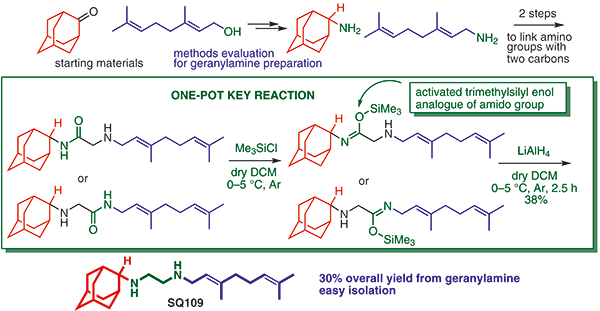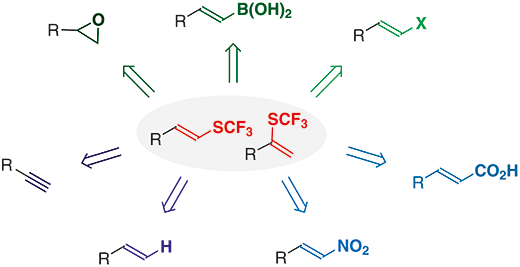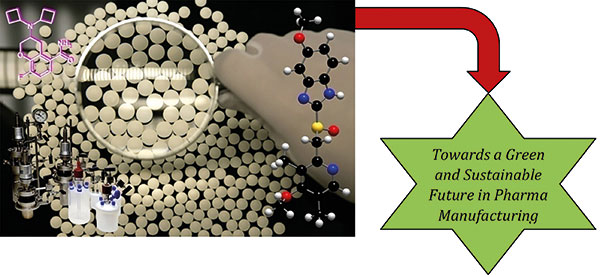

Highlight articles published in
SynOpen and SYNTHESIS
SynOpen
阅读全部论文 →
SynOpenhighlight article
We present here an improved procedure for the preparation of the promising antitubercular drug SQ109 that is currently in phase Ib/III of clinical trials against Mycobacterium tuberculosis. We investigated and tested the literature synthetic procedure that enables the development of structure–activity relationships and report the observed inconsistencies as well as presenting improvements or novelties for the more efficient preparation of SQ109. Most significantly we applied a novel reduction step of the aminoamide precursor using Me3SiCl/LiAlH4 under mild conditions. These findings are important for research groups investigating the efficacy of this drug and analogues in academia and industry.

Synthesis
SYNTHESIS highlight article
Direct Synthesis of Disubstituted Trifluoromethylthiolated Alkenes
Jeanne Fichez, Dorian Dupommier, Tatiana Besset
In the field of organofluorine chemistry, the quest for emergent fluorinated groups is in high demand. In particular, the scientific community has shown special interest in the SCF3 residue thanks to its unique properties. Indeed, over the last decade, the SCF3 group has become a pivotal fluorinated moiety, as demonstrated by several SCF3-containing compounds of interest, and, related to that, the steadily increasing number of synthetic methods that are available to access such molecules. In this Short Review, the main advances made for the synthesis of trifluoromethylthiolated disubstituted alkenes will be discussed and highlighted.

SYNTHESIS Conference Special Topic ISySyCat21
Hans-Jürgen Federsel
The introduction of the Green Chemistry Principles in the late 1990s formed the basis for a transition to a greener environment. These Principles have become an integral part in the work on designing chemical processes, especially for large-scale manufacture. The ultimate target is the achievement of a sustainable production method allowing hundreds of tons of valuable materials to be prepared. For this purpose, a holistic view must be applied to the elements constituting a fully-fledged process encompassing layout of the synthetic route, defining starting materials and their origin, output of product and quality features, quantity of effluent streams and waste, recovery and recycling of chemicals involved, and energy consumption. These parameters form a complex matrix where the individual components are in a complicated relationship with each other. This short review addresses these issues and the benefits of life-cycle assessment and metrics commonly used to measure the performance of chemical manufacturing – all from a pharmaceutical industry perspective as experienced by the author.

Impact of Design of Experiments in the Optimisation of Catalytic Reactions in Academia
Valeria Nori, Arianna Sinibaldi, Fabio Pesciaioli, Armando Carlone
Design of Experiments (DoE) is extensively and routinely used in industry; however, in recent decades, it has gained increasing interest from academia in organic synthesis. The use of chemometrics is an attractive strategy to find the real optimum in chemical reactions, especially when affected by several variables. DoE has been applied in a growing number of synthetic transformations over the years, where it undoubtedly helps in the process of optimisation, saving costs and time. This review concisely discusses the chemometric basis of Design of Experiments and highlights several examples in which DoE is applied in organic synthesis.

